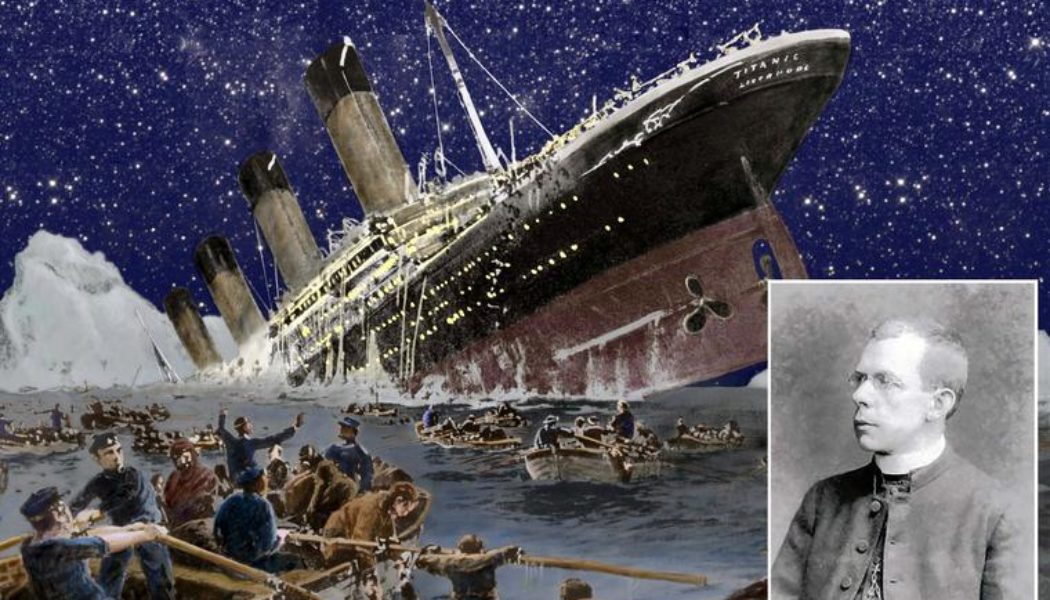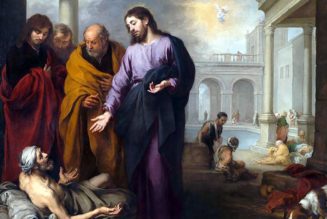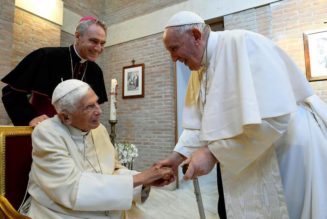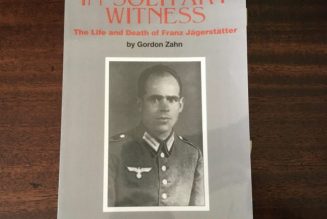
Toward the end of 1911, Father Thomas Byles, parish priest of St. Helen’s Church in Chipping Ongar, Essex, England, was invited to officiate at the marriage of his brother William to Miss Isabel Katherine Russell. The ceremony was to take place at St. Augustine’s Catholic Church on Sixth Avenue in Brooklyn, New York, on April 21, 1912.
His initial trans-Atlantic booking for the voyage across the Atlantic had been with the White Star Line, but due to industrial action he was unable to sail, so, at the last minute, his ticket was transferred and a berth secured on a new ship, RMS Titanic.
It was Easter Week when Father Byles left his Essex rectory early in the morning of Wednesday, April 10. Dressed in clerical black and with a single case, he had caught the train to London, and from thence the boat-train to the English port of Southampton, where he boarded the Titanic. The glamor of the ship’s embarkation was not lost on her passengers or indeed the priest when, just after noon on that Easter Wednesday, they set sail to the sound of a band playing.
On departing Southampton, in his cabin Father Byles wrote a letter to his elderly housekeeper to be posted when the ship docked briefly in Ireland. In his letter he expressed concerns that were both temporal and spiritual. He feared he had lost his umbrella while traveling on the train to the dock and, more importantly, that he would not be able to say Holy Mass until the ship cleared the Irish port of Queenstown (Cobh) — only after that point in the voyage did he expect to be able to offer Mass each day. In concluding his letter, he promised to write when he landed at New York.
When the Titanic set out on her maiden voyage in 1912, she was the largest vessel in the world with a passenger capacity of 2,435. It was claimed that she was unsinkable. On board, there were passengers of all social classes and of different nationalities. Among them there were three priests: Father Byles, a priest from Bavaria and another from Lithuania.
As the ship made its way into the Atlantic, Father Byles was berthed in second class, but it was mainly below decks in steerage, where many of the passengers were Irish, that he spent those initial days. On Saturday, April 13, he heard confessions for hours in preparation for the following day, Low Sunday — better known today as Divine Mercy Sunday. When Sunday did come, he said Mass for the passengers in steerage, giving a sermon that reflected the present circumstances of his congregation. He preached on the need for the “lifeboat of faith” in the ever-changing waters of life.
That Sunday, afternoon devotions concluded with the recitation of the Rosary. And, as night fell, the unsinkable Titanic plowed on through the Atlantic. All appeared to be well. This was an illusion, however — one that was shattered later that evening when, at 11:40pm, the alarm began to sound wildly.
On hearing its shriek, Father Byles descended below decks to steerage. There, as everywhere throughout the ship, fear was rising to a suffocating panic. The first thing he did was to call for calm, asking for silence. The frightened crowd gradually quieted. He then led all present to make an Act of Contrition. He explained the present dangers and started the evacuation of women and children from the steerage to the top deck, the priest escorting them upward through the various decks.
Father Byles worked as quickly and as calmly as he could to usher the women and children to the lifeboats. The characteristic of the priest most in evidence, and the one most remarked on later by survivors, was his presence of mind throughout. It was as if this moment was the one for which he had been preparing all his life. Seeing the first batch of women and children safely aboard lifeboats, and declining an offer to join them, he quickly descended once more below decks.
The ship’s band had been brought on to the upper deck to try and calm the fraught atmosphere on the now-sinking ship with what must have seemed surreal musical accompaniment. Nevertheless, it was becoming clear that there were not going to be enough lifeboats to save all those on board. Soon the priest was to stand on that deck alongside many others who awaited rescue but who were now effectively stranded. In the growing terror, Father Byles again declined the offer of a place in one of the few remaining lifeboats.
* * * * *
Born at Leeds in 1870, Byles was the eldest of seven children. In 1888, he went up to Balliol College, Oxford, having secured a mathematics scholarship; however, eventually, he changed to study for a degree in theology. Brought up a Protestant, it was while at university that he decided to embrace Anglicanism.
Anglicanism did not, however, satisfy him. A further period of prayer and study, mainly of the Church Fathers, followed, which unexpectedly led him to the Catholic Church. On the Feast of Corpus Christi, Byles was received into the Church at St. Aloysius, then run by the Jesuits, in Oxford. He received Holy Communion for the first time, and was also given a new Christian name, Thomas.
Byles soon after entered Oscott Seminary, but his health, never good, prevented him from persevering in his theological studies at that time. He tried teaching but this was not a success. By 1899, however, Byles was sufficiently restored in health to leave England for the Beda College in Rome where he was again to pursue his priestly studies. He was ordained priest on June 15, 1902.
Returning to England in 1903, Father Byles’s ministry was initially in London before ill health caused him to be sent into the country to convalesce. The following year, he returned to his priestly ministry, now in the country parishes of Essex. It was while serving there that he received a telegram telling him of the forthcoming wedding of his brother in New York City.
* * * * *
All those standing on deck watched as the last lifeboat disappeared into the surrounding blackness, and with it all earthly hope departed.
There were 1,516 souls still on board the ship.
The band on deck continued to play on, but had changed from playing popular tunes to hymns, including Abide With Me.
Those who had escaped the Titanic watched helplessly from the lifeboats as the figures on deck grew ever dimmer and the sounds of hymns and prayers now mingled with wailing.
Noting the first incursions of dark waters upon the deck, the priest made himself as visible as he could before those assembled and then proceeded to raise his hand in one last act of blessing and absolution. Then, with his crucifix and rosary and in his hand, Father Byles began once more to lead those gathered around him in the recitation of that ancient prayer as the band continued to play.
Abide with me; fast falls the eventide;
The darkness deepens; Lord with me abide.
Hold … Thy cross before my closing eyes …
In life, in death, O Lord, abide with me.
Join Our Telegram Group : Salvation & Prosperity









